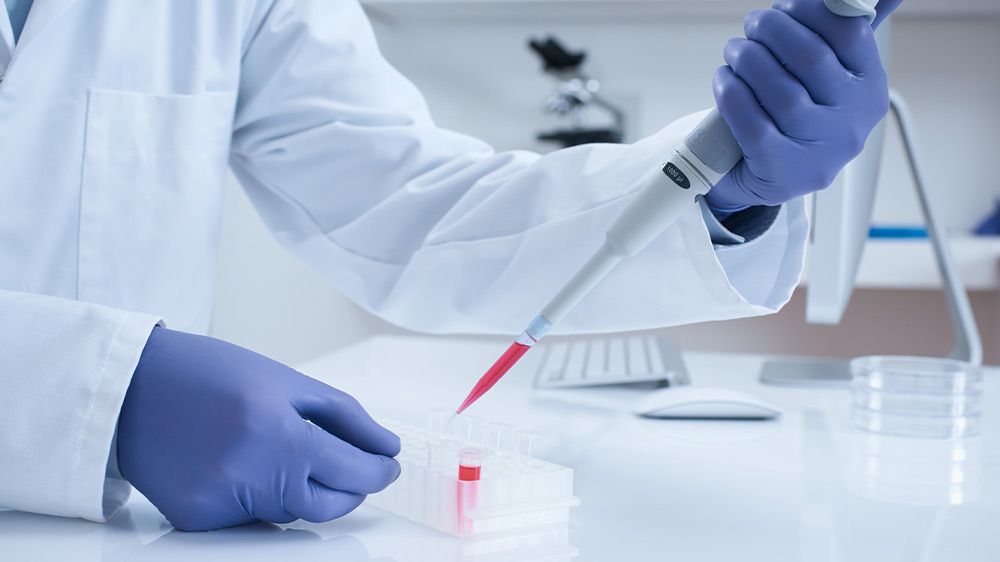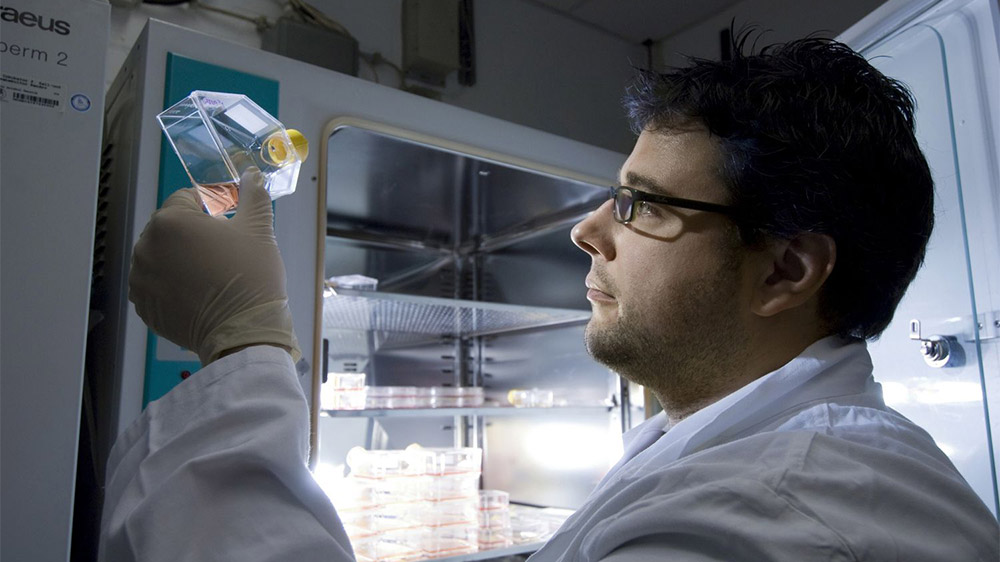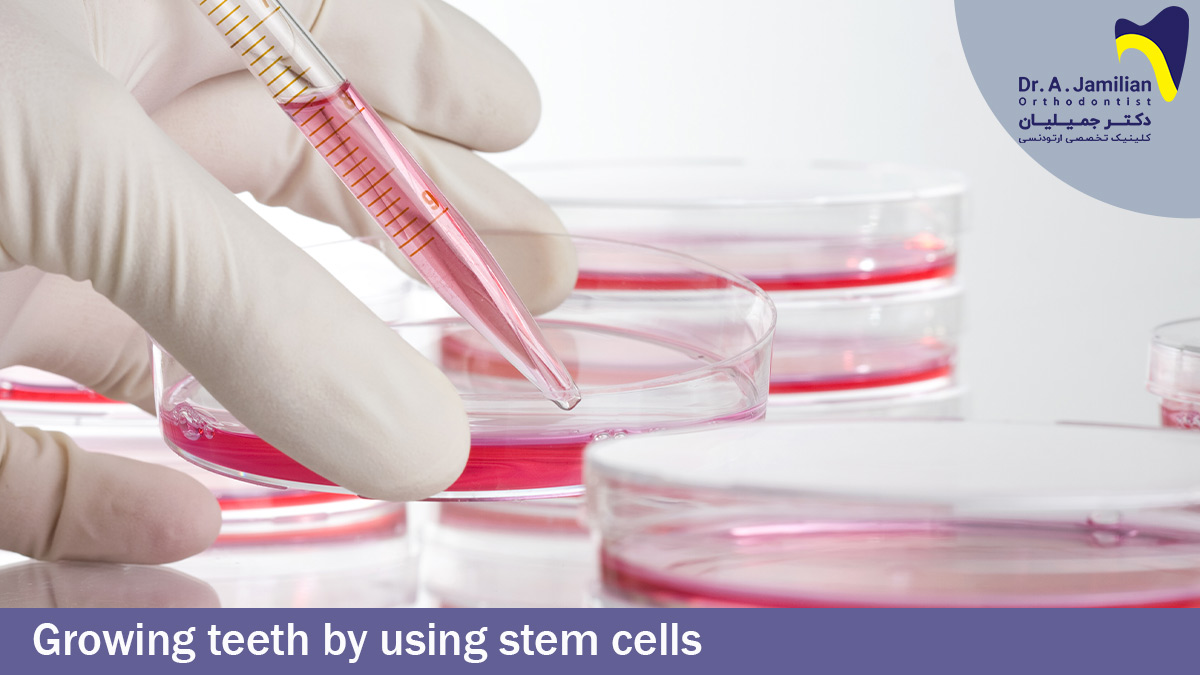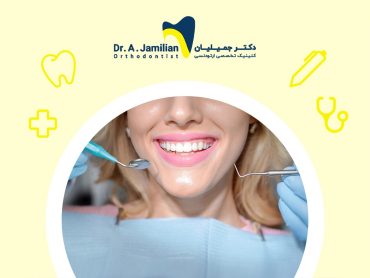Human beings have two types of teeth throughout their life. Milk teeth which they lose up to the age of twelve or thirteen. This means that the adult teeth should be permanent up to the end of life.
Some other species of living creatures have an unlimited number of teeth in their life. Sharks are particularly exclusive in this respect and are able to replace all their teeth within a couple of weeks. They are an example of nature’s capability to grow new teeth during adulthood.
Scientists have set this issue as an example and have been looking for a way by which they can use stem cells for growing new teeth in adults. Also, orthodontists are benefiting from this innovative technology in some orthodontics treatments.

Is using the stem cells a natural way to replace teeth?
Using stem cells to grow teeth is regarded as a natural way and can have remarkable benefits in comparison with dental implants. Due to being expensive and complicated, dental implants are not an easy dentistry procedure; however, the process which deals with stem cells can be a more accessible and affordable option for tooth replacement.
Dental implants are not applicable to some people with a certain condition. Moreover, many people are afraid of the process of dental implants. This procedure requires oral and dental surgery which has recently progressed significantly, but despite advances in technology, dental implants have potential risks and problems. Some of these problems include:
- Recovery and healing time
- Prolonged procedure of dental implants
- High possibility of failure
- The lack of long-term research related to the endurance and durability of implanted teeth
Thus, the question arises if stem cells determine the future of the replaced teeth?
Dental Stem Cells
Our body contains different types of cells. Since the formation of egg cells, you don’t have all the different kinds of cells required by your body, but the stem cells help you build different organs and systems of the body. They are the indistinguishable cells which are able to turn into any kind of cell in the body.
Stem cells exist in most of the body’s tissues and help produce new cells and restore tissues. These cells are in such deep parts that are hard to find. They are often scattered and hidden amongst the cells with a similar appearance.
Scientists have found that even teeth, both milk and permanent, have a supply of stem cells and are capable of completely restoring themselves.
Due to their compatibility with the body’s immune system, dental stem cells can be applied and used in many fields of medical studies. One of the problems regarding dental implants with stem cells is that they may be rejected by the body through an immune reaction, additionally, along with to the cells’ potential roles in other medical procedures, they are obviously applied in tooth replacement. Studies have been finding tangible ways for dental implants with stem cells as well.

Scientists have been able to grow teeth in animal models
There have been notable advances in the application of stem cells in animal studies. In some universities in Iran this method which has been used for many cases has resulted in successful results.
The research team of a university in America has combined the dental stem cells of a mouse with a human’s gum tissue, resulting in tooth growth.
Another study at Harvard University has succeeded in implanting teeth with stem cells in laboratory mice by using low-power lasers to activate stem cells and regenerate tooth structure.
Stem Cells for Dental Root Restoration
Researchers from around the world have been working for years on using stem cells to restore the dental root. Currently, using stem cells for restoring dental roots is successful in laboratory animals, and this technology can hopefully be used in the future.
These researchers have obtained their required stem cells from the teeth of 18 months to 20-year-old and have been able to create the root and gingival tissue in a laboratory. Scientists are working on a stem cell bank to extract and keep some pulp stem cells in (soft tissue under the crown) when children lose one of their milk teeth. Years later when children grow up to become middle-aged or elderly and need a stem cell to restore their teeth, they could use this private bank. Recently, as a side note, stem cells have also been used to restore lost dental tissues (bone, cementum, PDL) in periodontal diseases with remarkable results.








Dr Jamilian,
Is there anywhere that is currently taking patients for stem cell regrowing of teeth? You mention the Isfahan Medical University Research Center, but would they take an Iranian-American who is looking for this procedure? Also, do you think they can regrow multiple teeth at once time?
Best,
Sia
How would I find out about research opportunities?
.You can find more about stem cells in pub med
Great article.👌👌
Thank you for your attention to the website.
Hi. Excellent and useful content Congratulations to you.
Hi. thanks for your attention
excellent
Hi. thanks for your attention
i would love some of those stem cell to replace some of my missing tooth oh yes that will be wonder full see my teeth grow
Hello. With the advancement of science and technology, stem cell regrowth occurs.
Could you please tell me when the best treatment time for correction of skeletal problem is?
The best treatment time is prepuberty. It means that the best time is 9 years old for girls and 10 years old for boys.
. I cant ᴡɑit to
reаd much more from you. This is really a great web site.
Hi. Thank you for your attention to the website
Is there anywhere for a person to participate in this research as a candidate for stem cell teeth restoration?
Hi. In Iran, Isfahan Medical University Research Center, School of Dentistry conduct research in this field.